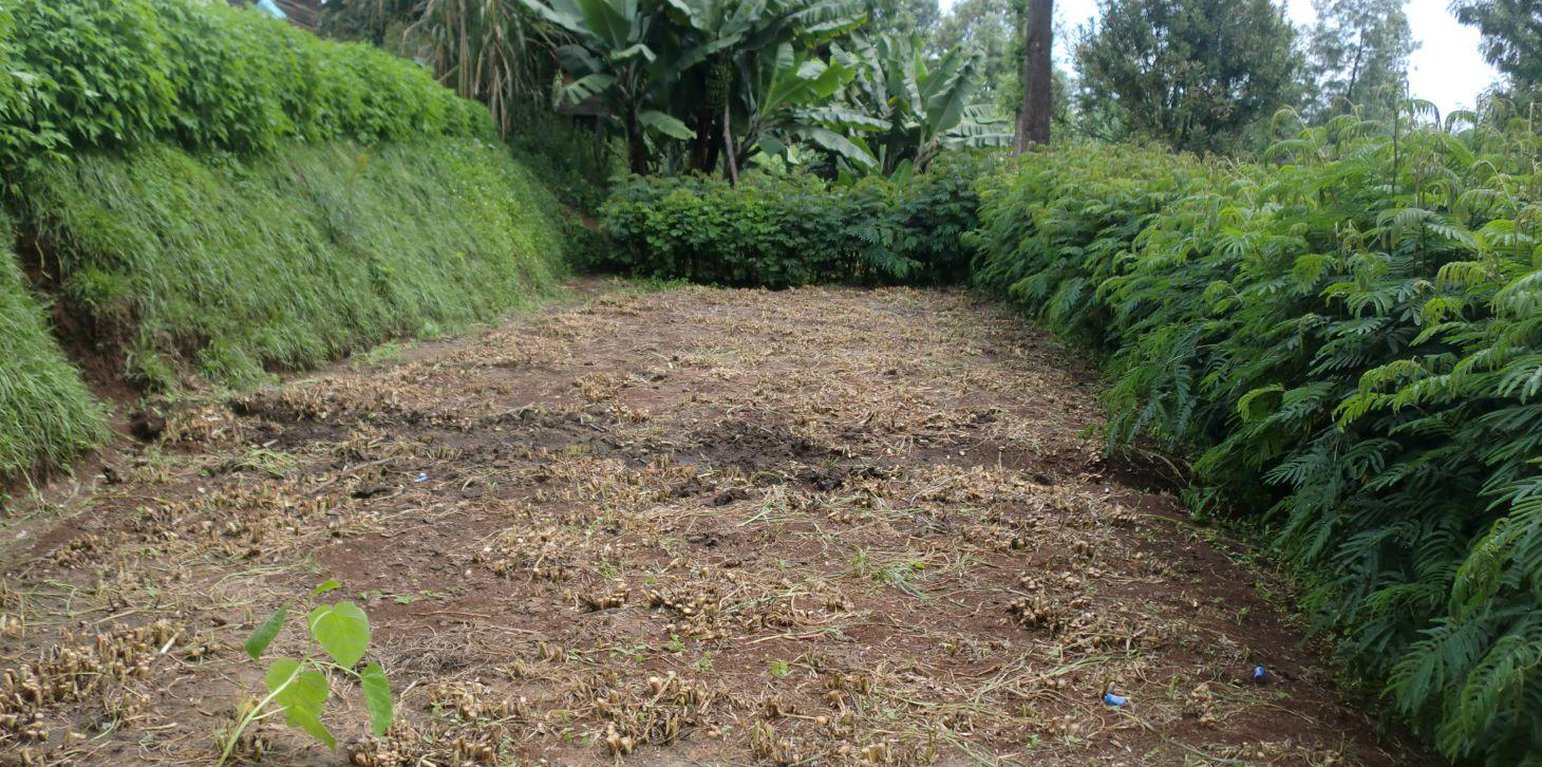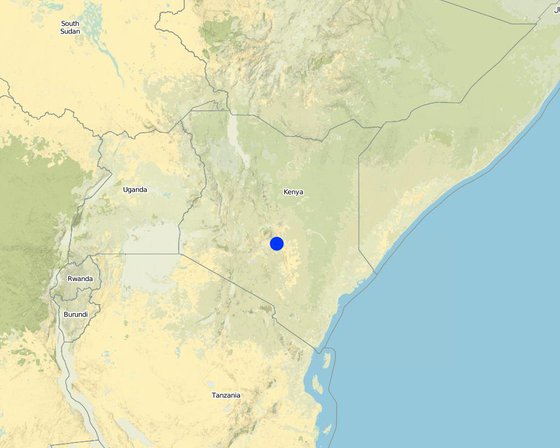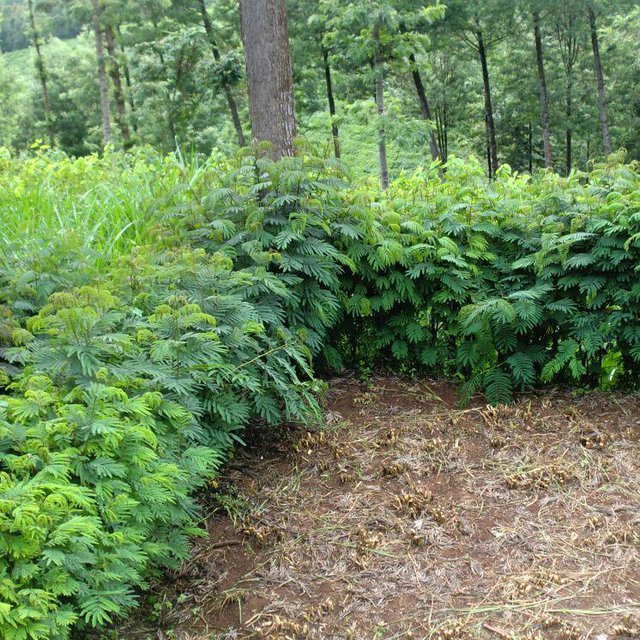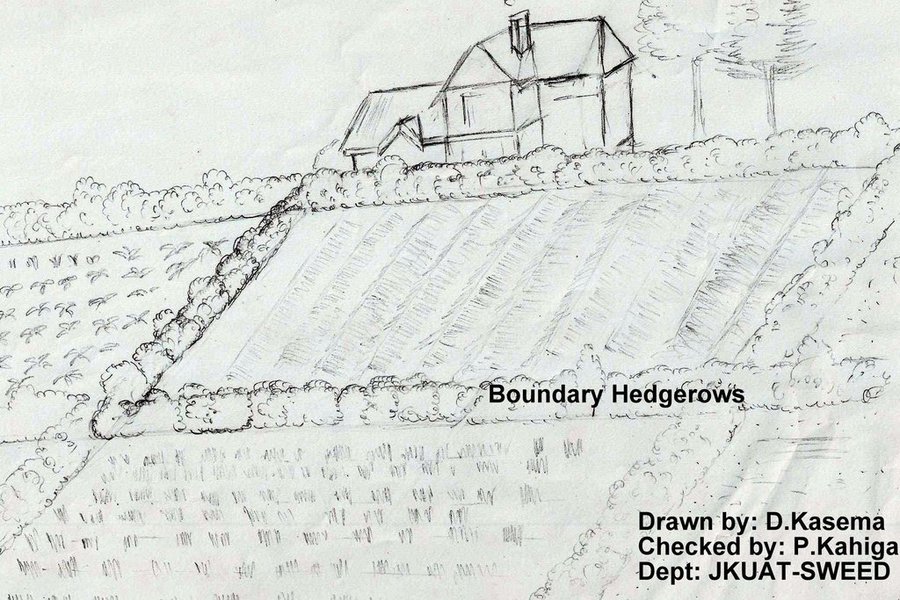



A hedgerow may consist of a single species or several, typically mixed at random. In most newly planted British hedgerows, at least 60 percent of the shrubs are hawthorn, blackthorn, and (in the southwest) hazel, alone or in combination. The first two are particularly effective barriers to livestock. Other shrubs and trees used include holly, beech, oak, ash, and willow; the last three can become very tall.
Purpose of the Technology: Hedgerows have many values and functions. A diversity of hedgerow types and management on a farm is ideal. The functions of hedgerows include the following: Shelter - hedgerows provide protection for livestock and crops for up to thirty times their height, a dense base is also more effective. Flooding control –root systems of hedgerows regulate water movement and help prevent flooding. Disease control –hedgerows help prevent the spread of airborne disease. Water quality – hedgerows trap silt and soil particles, which clog up fish spawning grounds if they enter watercourses . Wildlife - hedgerows have become very important wildlife habitats in the countryside.
Establishment / maintenance activities and inputs: New hedges should be pruned from an early stage to establish a shape and prevent leggy, unhealthy growth. The amount pruned back will depend on the type of hedge. The hedge is shaped as early as possible and tapered so that it is wider at the bottom than the top, ensuring the lower part will get the sunlight it needs for healthy growth. Once the hedge is established, regular maintenance will ensure it keeps healthy and neat. The hedge is cut by the eye , but it can be a good idea to set lines with lengths of string taut between canes. If a formal hedge has got out of shape, cutting it back severely is often the only remedy. But this method is not suitable for all species. Conifers, in particular, react badly if you cut into old wood.
Natural / human environment: Hedgerows can be very effective at preventing loss of soil from fields, either through reducing wind erosion or through acting as a barrier to water-borne run-off. This is particularly so in arable areas, both where the land is flat and prone to wind-blow and in hilly areas where loss of soil following heavy rain can be a major problem especially in places prone to gully erosion.

ສະຖານທີ່: Mbere South District, Eastern Province, ເຄັນຢາ
ຈໍານວນ ພື້ນທີ່ ທີ່ໃຊ້ ເຕັກໂນໂລຢີ ທີ່ໄດ້ວິເຄາະ:
ການແຜ່ກະຈາຍຂອງເຕັກໂນໂລຢີ: ແຜ່ຂະຫຍາຍຢ່າງໄວວາໃນພື້ນທີ່ (approx. < 0.1 ກິໂລແມັດ2 (10 ເຮັກຕາ))
ຢູ່ໃນເຂດປ່າສະຫງວນທີ່ບໍ?:
ວັນທີຂອງການປະຕິບັດ:
ປະເພດຂອງການນໍາສະເໜີ





| ລະບຸ ປັດໃຈ ນໍາເຂົ້າ ໃນການຜະລີດ | ຫົວໜ່ວຍ | ປະລິມານ | ຕົ້ນທຶນ ຕໍ່ຫົວໜ່ວຍ (Kshs) | ຕົ້ນທຶນທັງໝົດ ຂອງປັດໃຈຂາເຂົ້າ ໃນການຜະລິດ (Kshs) | % ຂອງຕົ້ນທຶນທັງໝົດ ທີ່ຜູ້ນໍາໃຊ້ທີ່ດິນ ໃຊ້ຈ່າຍເອງ |
| ແຮງງານ | |||||
| Labour | ha | 1.0 | 100.0 | 100.0 | 100.0 |
| ອຸປະກອນ | |||||
| Tools | ha | 1.0 | 20.0 | 20.0 | 100.0 |
| ວັດສະດຸໃນການປູກ | |||||
| Seedlings | ha | 1.0 | 20.0 | 20.0 | 100.0 |
| ຕົ້ນທຶນທັງໝົດ ໃນການຈັດຕັ້ງປະຕິບັດ ເຕັກໂນໂລຢີ | 140.0 | ||||
| ຄ່າໃຊ້ຈ່າຍທັງໝົດ ສຳລັບການສ້າງຕັ້ງເຕັກໂນໂລຢີ ເປັນສະກຸນເງີນໂດລາ | 1.4 | ||||
| ລະບຸ ປັດໃຈ ນໍາເຂົ້າ ໃນການຜະລີດ | ຫົວໜ່ວຍ | ປະລິມານ | ຕົ້ນທຶນ ຕໍ່ຫົວໜ່ວຍ (Kshs) | ຕົ້ນທຶນທັງໝົດ ຂອງປັດໃຈຂາເຂົ້າ ໃນການຜະລິດ (Kshs) | % ຂອງຕົ້ນທຶນທັງໝົດ ທີ່ຜູ້ນໍາໃຊ້ທີ່ດິນ ໃຊ້ຈ່າຍເອງ |
| ແຮງງານ | |||||
| Labour | ha | 1.0 | 30.0 | 30.0 | 100.0 |
| ອຸປະກອນ | |||||
| Tools | ha | 1.0 | 20.0 | 20.0 | 100.0 |
| ວັດສະດຸໃນການປູກ | |||||
| Seedlings | ha | 1.0 | 10.0 | 10.0 | 100.0 |
| ຕົ້ນທຶນທັງໝົດ ທີ່ໃຊ້ໃນການບໍາລຸງຮັກສາ ເຕັກໂນໂລຢີ | 60.0 | ||||
| ຄ່າໃຊ້ຈ່າຍທັງໝົດ ສຳລັບການບົວລະບັດຮກສາເຕັກໂນໂລຢີ ເປັນສະກຸນເງີນໂດລາ | 0.6 | ||||